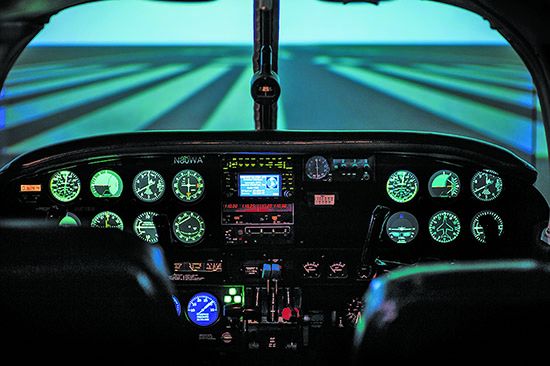
The combination of insurers watching accidents and resulting claims go down as the amount of recurrent training taken by pilots goes up has slowly but steadily caused more and more aircraft owners to discover that they must take some form of annual training to insure their machines. We’ll look at insurance requirements, how you can meet them, how you may be able to personalize required training and how you can cut your risks with personalized training even if your insurer does not require it, yet.
We’ll break down our observations on the need for and finding recurrent training into three parts: first, piston twins and cabin-class or pressurized piston singles; then complex piston singles; and finally fixed gear piston singles, although we consider the Cirrus and Lancair/Columbia hot rods to be akin to complex singles because of their performance.
IT’S INSURANCE DRIVEN
We spoke with two insurance brokers about requirements for recurrent training for aircraft owners and received consistent input. Scott “Sky” Smith, proprietor of his eponymous specialty insurance brokerage (www.skysmith.com), told us that in the piston airplane world, if you own and fly a pressurized and/or cabin-class single or twin, it is almost a certainty that your insurer will require recurrent training that the insurer approves. That can get interesting; however, insurers keep lists of training facilities and individuals that they approve and, according to Smith, will approve training operators and individual instructors who can demonstrate significant experience instructing in type as we’ll as provide a training syllabus that fits the insurer’s needs.
Mike Pratt, a senior account executive at the aviation insurance brokerage Foundation Risk Partners (www.foundationrp.com), agreed with Smith’s comments while noting that insurers have been increasingly unwilling to insure owner-flown piston twins. “Only two companies will write coverage and premiums keep increasing.” He cautioned that it currently is very difficult for someone wanting to step into a piston twin to get insurance without significant time in type and completion of an approved initial training course, usually simulator based. Oh, and if you are over 69 years old, you can be almost certain that no insurer will touch you if you wish to step up from a fixed-gear piston single.
TWIN AND/OR CABIN CLASS
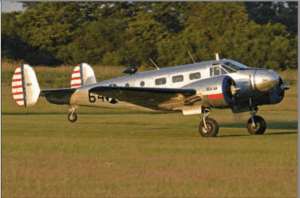
Based on our conversations with Messrs. Smith and Pratt, we learned that insurers generally call for simulator-based recurrent training for piston twins and pressurized or cabin-class singles. We were advised to look carefully at the language of the policy as insurers have been known to insert wording such as “factory-approved school,” “factory school,” or “factory-approved training” when such a thing does not exist.
Our informal review of the training market found several simulator-based training operators that target high-performance piston airplanes, although most tend to specialize in one or two manufacturers. In addition, most of the recurrent training programs were two days in length and required that the customer come to the operator. Sim-based operators varied as to whether they also gave training in the customer’s airplane. Prices we saw ranged between $3000 and $7000. We heard various operators mention that the training qualified for an insurance premium discount of 7.5 to 10 percent. As most insurers required the training to begin with, we’re skeptical of claims of premium reductions unless the training was not mandated.
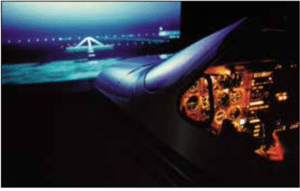
Longtime simulator-based trainer SimCom (www.simulator.com), with bases in Orlando, Florida, and Scottsdale, Arizona, offers two-day recurrent training in all of the Cessna piston twins (except the Skymaster series), Beech Baron series and Piper Navajo series. Completion of a simulator-based review course earns the customer a flight review through the FAA WINGS program. SimCom also offers in-aircraft training and mentoring—although its website only mentions it for initial training customers, but we can’t help but believe that it would be available as an add-on for recurrent customers seeking an IPC endorsement.
Aircraft Simulator Training (www.aircraftsimulatortraining.com) has its piston airplane training center in Burnet, Texas. It offers simulator and in-airplane recurrent training for most twin Cessnas and the Beech Baron series. It owns a Cessna 340A and 421C in which they give in-airplane training and will give it in a customer’s airplane.
The company advertises its simulators as state of the art and is uncommonly blunt in describing its training as “to airline standards” and recurrent training with a focus on “save your butt” items. We also appreciate that the company’s website sets out its training syllabus in some detail.
We are big fans of simulator-based training for many reasons, including efficiency in getting a lot of training done, safety—in that a pilot screwup isn’t fatal and that it doesn’t beat up your airplane. By the same token, you don’t bounce your head off the side window in turbulence and you don’t get the true eardrums about to rupture feeling during depressurization.
We’ll also add the caveat in a time that avionics and panel presentations can vary vastly between even two airplanes that rolled of the assembly line the same—training in a simulator that has the same avionics and presentation as in your airplane can be a safety of flight matter due to the risk of negative transfer from what you learned in the sim to what you need to do in your airplane.
CHECK THE AVIONICS
That causes us to strongly recommend that before you schedule any simulator training that you satisfy yourself that the training operator can put together a simulator panel that reasonably approximates what you look at in your airplane. If they can’t we suggest you look elsewhere or get your insurer’s authorization to train in your airplane.
In passing we’ll mention a problem that we used to hear a lot, but the complaints have died down—hopefully because operators are maintaining their simulators better. For some time it wasn’t unusual for us to hear of a customer who traveled some distance for simulator training in a tight time window only to have the one sim the company had that represented his airplane break—and he had to finish in a completely different sim. One example was a Cessna 310 owner who had to finish training in a King Air simulator. Our takeaway—make sure that the operator has more than one sim of the type you need.
Based in Franklin, Tennessee, Aircraft Training Management (www.flyatm.com) does only in-airplane training. Its instructors come to you—well, to an FBO you pick, so that you have a sterile classroom environment without interruptions.
The syllabus on its website runs nine pages and is one of the most complete we’ve seen. Recurrent training takes two to three days depending on the model of the aircraft. The basic recurrent course includes five hours of dual in the airplane. Should the pilot need more to achieve proficiency, additional dual is offered.
The company offers training in the Piper Malibu and Mirage series, Aerostar, Beech Baron and most twin Cessnas.
SINGLES AND TWINS
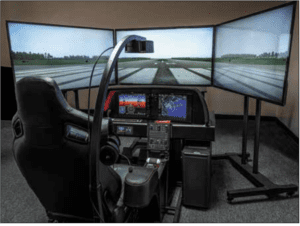
The American Bonanza Society (ABS) (www.bonanza.org) offers members unlimited access to the ABS Online Learning Center (OLC) and its initial and recurrent training materials for virtually all models of the Bonanza, Debonair, Baron and Travel Air.
As part of the ABS recurrent training, the pilot completes the online portion and then pays $450, a “Focus flight fee,” which pays for two hours of flight instruction in your airplane with an ABS-approved flight instructor. We have been impressed with ABS CFIs.
FIXED-GEAR SINGLES
Based in Tampa, Florida, RTC (www.rtcpilot.com) offers simulator-based recurrent training in all piston twin Cessnas; Cessna singles—172, 182, 206, 210 and P210; Piper twins—Aztec, Twin Comanche, Navajo, Seneca, Seminole and Aerostar; and Piper singles—Cherokee, Warrior, Archer, Arrow, Six and Saratoga.
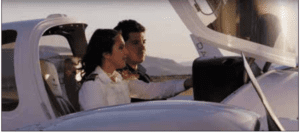
The course is ordinarily 2 1/2 days long; however, RTC offers one-day recurrent training in which the customer completes ground school on their own time and then comes in for the simulator instruction.
COPA
We like owner associations that have training programs, such as the ABS we spoke about above. There’s also a good one through the Lancair Owners and Builders Organization (www.lancairowners.com) and we note that a number of type clubs have type-specific educational programs that have done a great deal to increase the level of safety for their pilots. Space doesn’t allow mention of all of them, but we are going to note the Cirrus Owners and Pilots Association’s (COPA) (www.cirruspilots.org) COPA Pilot Proficiency Program (CPPP).
Initially the Cirrus accident record wasn’t great. Short story is that the company and owners took the issue seriously. What emerged is the robust CPPP conducted by COPA University and the COPA Safety and Education Foundation LLC.
CPPP training might best be described as events, taking place over a weekend at locations across the country. Not only do they include ground instruction, sim time and in-airplane dual, they have a social side where Cirrus pilots and their families meet and spend time with other owners of the marque. They ordinarily include up to 15 hours of ground instruction and one-on-one time with COPA-approved CFIs.
REDBIRD SIMULATORS
We’ve observed that more and more flight schools and FBOs have Redbird FMX simulators. Those AATDs can do a nice approximation of a number of piston singles and lower end twins. We have observed CFIs who know the units organize and give what we consider to be effective recurrent training that they combine with the customer’s airplane to result in a flight review and IPC endorsement.
For pilots flying something a little less demanding than a complex single, Cirrus or Lancair/Columbia, we think that simulator-based recurrent training using a Redbird FMX and a customized syllabus can be quite effective.
We are firmly of the opinion that focused annual recurrent training is the best way of maximizing your chances of many years of happy, safe flying.
CONCLUSION
Whether your recurrent training is mandated by insurance or something you just do, we think that a carefully planned syllabus that provides a serious review on the ground, in a sim and in your airplane is worth every cent you spend on it.




